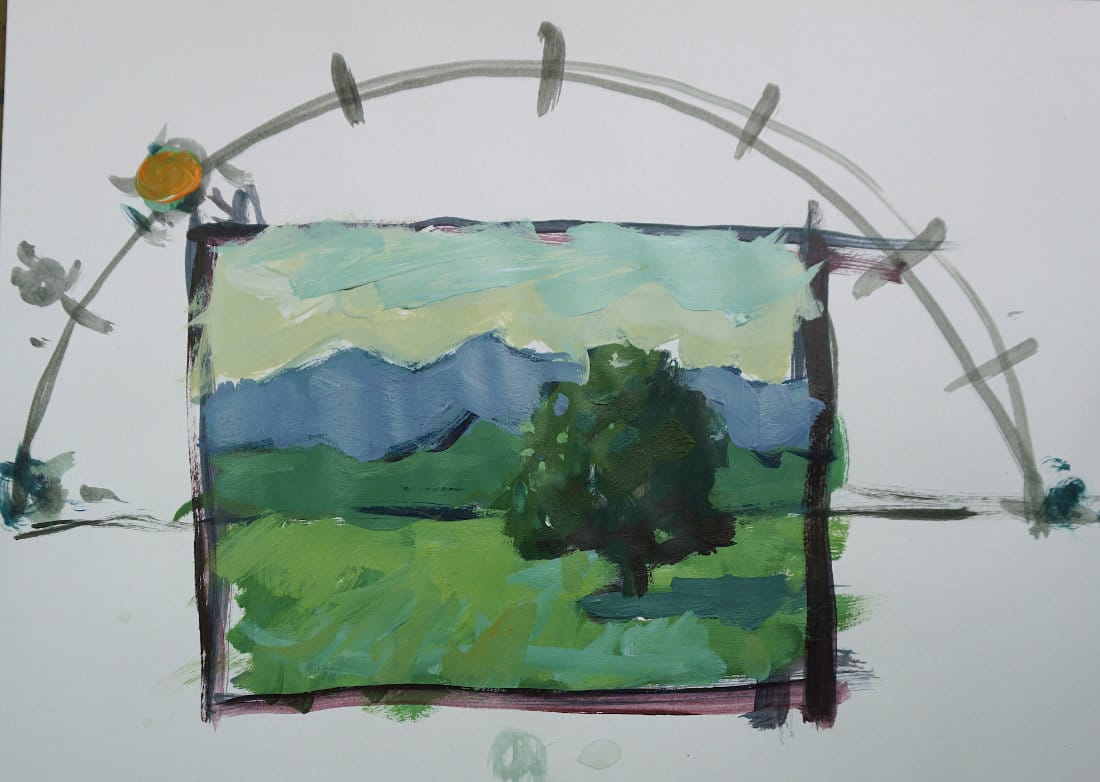Understanding Light & Planes in Acrylic Landscapes
Discover how light defines form in this key lesson on the three main planes — horizontal, vertical, and angular — and how each reacts to sunlight and shadow.

In this lesson, we explore how light interacts with the three major planes that make up most landscapes — flat, vertical, and angular. Mastering this concept gives you control over light direction, shadow placement, and overall structure in your painting.
This lesson is part of the Acrylic Landscape Painting Fundamentals Course
The Three Common Planes
- Flat (Ground) Plane — The lightest plane because it directly faces the sky and receives the most sunlight.
- Vertical Plane — The darkest plane, often seen on trees, buildings, or cliffs. It receives less direct light and reflects less bounce light.
- Angular Plane — Falls somewhere between the two. Sloped hills or rooftops catch light differently depending on their angle and the sun’s position.

How Light Travels Across the Landscape
Imagine sunlight moving across a dome — that light hits the ground first, then bounces up into shadows. This ambient light softens the darks, making cast shadows on the ground slightly lighter than shadows on vertical planes.
Use this relationship to give your landscapes more believable contrast:
- Darkest darks: vertical forms in shadow
- Midtones: sloped or angled planes
- Lightest lights: horizontal ground planes
Avoid Overcomplicating Planes
As you paint, keep your value structure simple:
- Identify whether each area is in light or shadow
- Avoid over-modeling or blending too many half-tones
- Use accents sparingly for highlights or reflected light
This discipline helps keep your structure solid — and your painting more painterly.
Try This Exercise
Create a quick study like the one shown above. Use three clear value zones and note how changes in plane angle shift your light. Keep it loose and focus on overall design rather than detail.
Course Navigation
- Previous: Lesson 18 – Value Hierarchy Practice Reel (My Results)
- Next: Lesson 20 – Master’s Examples of Planes & Light/Shadow
- Return to Course Hub: Acrylic Landscape Painting Fundamentals
Learn & Improve Your Acrylic Skills
- Acrylic Hub– Your go-to guide for tutorials, tips, and resources.
- Ultimate Beginner Acrylic Course - Start painting with confidence.
- Subscribe for More Great Content - Get tutorials, tips, and updates straight to your inbox.
- Follow Me on Pinterest - Daily inspiration, tips, and fresh ideas.
Recommended Acrylic Painting Materials
-
Princeton Catalyst Brushes – Flats (#6, #12), Rounds (#4, #8), Fan (#4), Liner Brush
Durable synthetic bristles for versatile acrylic techniques -
Liquitex Heavy Body Acrylic Paint – Essential Colors
Cadmium Yellow, Yellow Ochre, Alizarin Crimson, Cadmium Red Light, Ultramarine Blue, Cobalt Blue, Burnt Sienna, Titanium White -
Winsor & Newton Cotton Canvas
Reliable stretched canvas for studio and plein air work -
Strathmore 400 Series Mixed Media Paper
Heavyweight, acid-free paper for acrylic and mixed media -
Fabriano Artistico 140lb Cold Press Paper
Excellent for acrylic, mixed media, and textured effects -
Blick Multi-Colored Painting Knife Set
Variety of shapes for texture, scraping, and bold strokes - Miscellaneous: Two pint-sized water containers, paper towels (from Home Depot or Walmart)
- Note: I use canvas or sturdy cardboard as my palette — no store-bought palettes needed.




